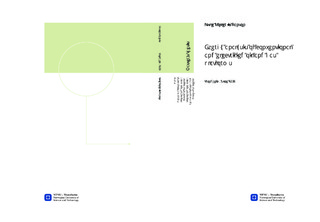Exergy analysis of conventional and electrified oil and gas platforms
Master thesis
Permanent lenke
http://hdl.handle.net/11250/235802Utgivelsesdato
2014Metadata
Vis full innførselSamlinger
Sammendrag
This paper compares the efficiencies of oil and gas producing offshore platforms, at different points in the production lifetime and for different heat and power supply options by means of energy and exergy analysis. Offshore platform electrification is a tool being employed by the Norwegian government in order to meet its emission reduction promises. The electrification of offshore platforms however, may not always lead to a higher overall system efficiency or the reduction of CO2 emissions when onshore power production and transmission are taken into account.Aspen HYSYS platform simulations have been made, where heat and power duties are supplied by either gas turbines, partial electrification or full electrification. Stream property data has then been exported to spreadsheets where data for the electrification option power sources (Norwegian hydro power and German combine cycle gas power) have been calculated. Finally, energy and exergy efficiencies, as well as CO2 emissions, were calculated for each case.For the gas platform, electrification reduced CO2 emissions and increased the lifetime energy and exergy efficiencies when compared to the gas turbine case. This result was independent of where the power originated. For the oil platform, all of the electrification options except for one, gave emission decreases and efficiency increases. The oil platform with full electrification from a German CCGT plant led to an overall system efficiency decrease and increased CO2 emissions. In general, electrification of the gas platform led to greater efficiency gains and emission reduction than electrification of the oil platform.This paper provides a slightly different perspective on the issue of offshore platform electrification. It illustrates how exergy analysis can be used to compare whole systems, and highlights some of the issues associated with the methods used. This type of analysis could be employed by governments and oil companies as part of an electrification evaluation process.
